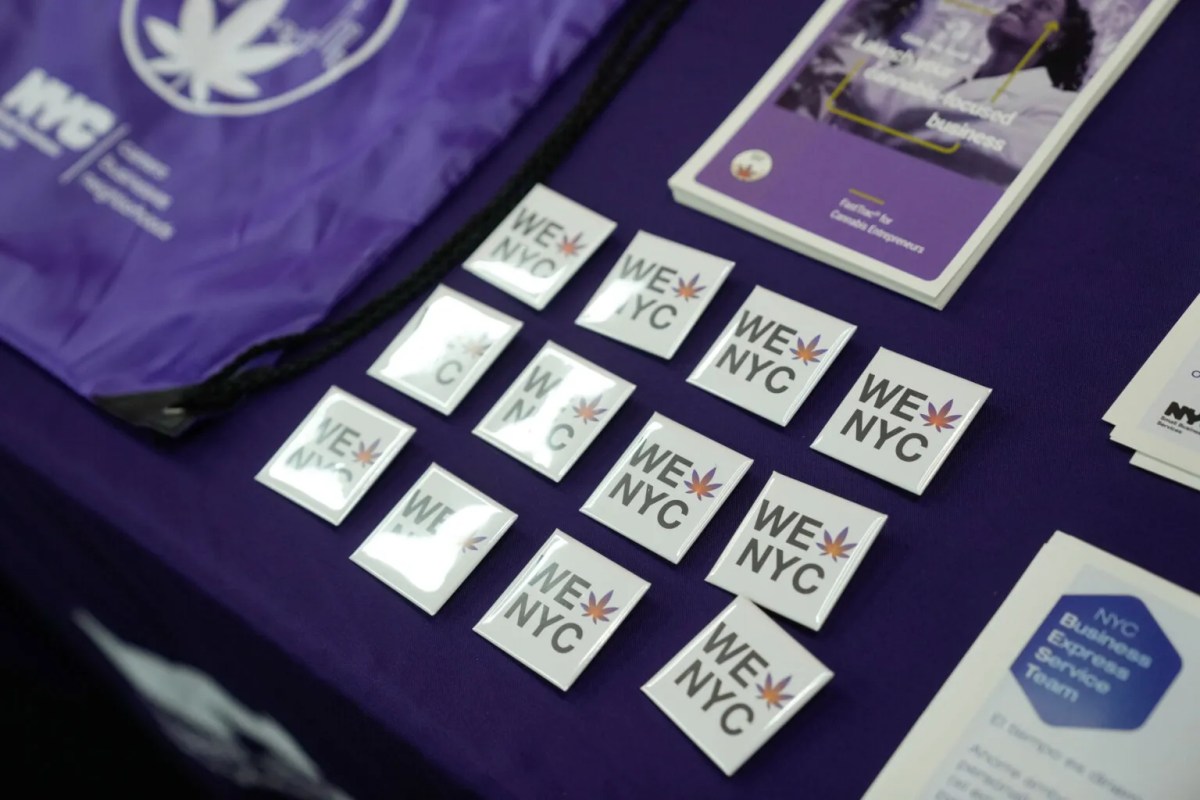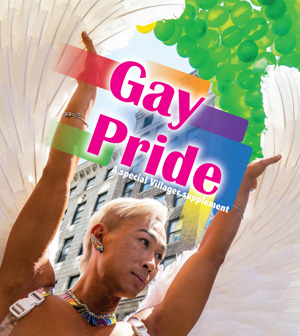 For more than half a century, Christopher St. has been the stomping ground for New York’s LGBT community. In 1969, the Stonewall Riots, at the Stonewall Inn, brought attention to the street and helped start the gay rights movement in the U.S.
For more than half a century, Christopher St. has been the stomping ground for New York’s LGBT community. In 1969, the Stonewall Riots, at the Stonewall Inn, brought attention to the street and helped start the gay rights movement in the U.S.
The 1990 film “Paris is Burning” — a documentary about the ball culture in New York City and the many members of the L.G.B.T. community involved in it — featured the Christopher St. Pier.
Christopher St. is a second home to those seeking acceptance and refuge from their neighborhoods. At its western end, the Christopher St. Pier, also known as Pier 45, has been a safe haven over the years for gay youth, especially the homeless and those of color.
Members of the gay community, of various ages, shared with The Villager why they come to the pier, why it’s such an important place for them and how it’s changed over the years.
Luis Soto, 18, from the Bronx
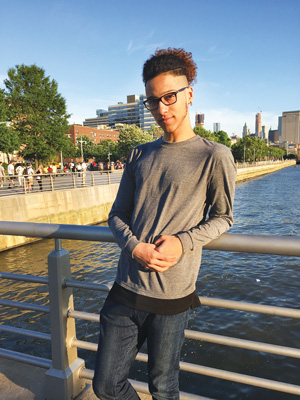
Vil: Why do you like coming to the Christopher St. Pier?
I was just introduced to the pier like last month. I feel like when I come here, I’m just welcomed by everyone. It feels welcoming like this is home. My second home basically.
Vil: Do you feel comfortable being yourself in your neighborhood?
In my neighborhood, I feel like, “OK, I’m dressed up. Now, I need to leave.” Over here, it’s like, “Yes. I get to put on a show.” It’s like all eyes are on me in my neighborhood in a negative way. Over here, it’s like you’re just welcomed.
Vil: What do you like to do while you’re here at the pier?
I like to just sit down with friends and ki. “Ki” is like just get together, talk, just enjoy the time that we have, eat. It’s just amazing.
Vil: Have you met new friends out here?
I met friends of friends. It’s a great way to network with friends in the gay community since it is so small. You either come here and see people that you have vibed with before, or people you have negative pasts with; but you know you respect the place and you just chill here.
Josh, 18, from the Bronx
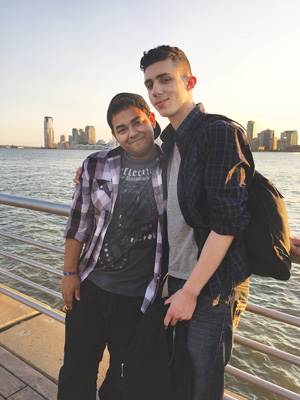
Vil: Why do you like coming to the Christopher St. Pier?
It’s a great view. It’s a great feel. You get to see the whole city, but also it has some green. There are a lot of hot guys around here that are shirtless, so some good eye candy.
Vil: Do you feel comfortable in your neighborhood being gay, or more comfortable when you come here?
More here. It’s a just a place where…you could just be yourself, not really be worried. Up in the Bronx, or at least where I am at, it’s more Latino-based. Homosexuality isn’t as common over there. Over here, at least, I can be here…with other people like me.
Vil: How often do you come to the pier?
As often as I can. During the summer, a lot more frequent. A couple times a week. During the school year, I’d say maybe about once or twice a week.
Vil: What is a typical day like at the pier for you?
Just walking around, either lying down on the grass, sitting on a bench or standing over here looking at the water. And again, looking at eye candy because there are a lot of guys jogging out here that have abs.
Vil: Do you think the pier has changed your life in any type of way? Do you think it’s made you more comfortable being gay?
Definitely. A lot of my friends, we just come here and chill. We can just be us. We can listen to music out here. Talk about any kind of stuff we want to talk about, different guys we like. We’re not going to get judged by a stranger. Sometimes, some strangers will even join along.
Jamel, 21, from Brooklyn
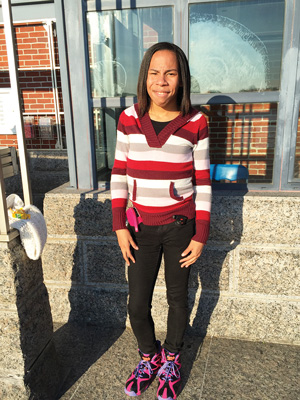
Vil: Why do you like coming to the pier? Is it an important place for you?
It’s not really important to me, but I come out here to kiki with the girls.
Vil: Do you feel comfortable being yourself in your neighborhood?
For the most part, but I’m still cautious. There are more people around here, like more gay people, more open people, more people in my community that I can come here and express myself, and not be judged.
Vil: How often do you come to the pier?
I used to come very, very often. Now, I come like once in a blue moon.
Vil: Do you have some good memories here?
A couple years ago, I met my home girl. But I didn’t meet her here, I met her at The Door [the youth-development center at 555 Broome St.]. I had never got her name or number. Then a couple days later, I pumped over here and we ki’d the whole day when I saw her. It was just so fun.
Patrik-Ian Polk, 41, originally from Mississippi
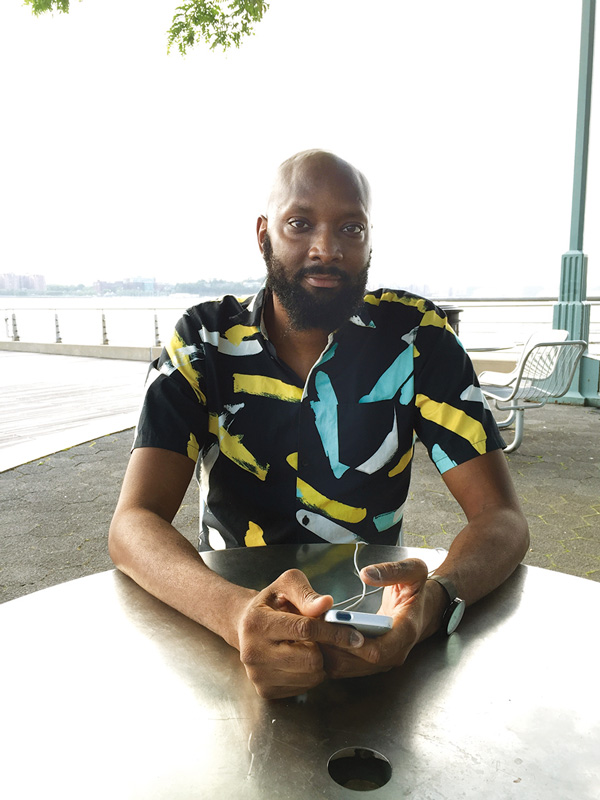
Vil: Why did you come to New York?
Work.
Vil: How long have you been coming to the pier?
Since college.
Vil: Why do you like coming to the pier? Is it an important place for you?
As far as public parks go, it’s nice. It’s on the water. It’s a space that everyone can enjoy.
Vil: Do you feel comfortable being gay here in contrast to your neighborhood?
Yeah, I feel comfortable here. I think, even with the sort of changes, there still seems to be a pretty heavy gay presence here.
Vil: Have you noticed any differences from when you started coming here versus now?
They’ve completely redone it. When I was coming here two decades ago, it was very different. They’ve cleaned it up, and switched it up quite a bit. Now, they have curfews. It used to be pretty much open all the time.
But the whole neighborhood has been going through a sort of gentrification process over the last how many ever years. Christopher St., for example. You’ve seen the bars slowly disappearing. Certainly, the bars that cater to gay people of color are mostly gone, with the exception of the Hangar, which is still there. In that regard, it’s very, very different.
It used to be really gay down to where there was — right at the corner of Christopher St. — a big black gay bar. Not to mention, numerous places up and down the street. In that way, it’s kind of changed.
But the gay community, certainly the gay community of color, is still regarding this place as obviously a place of interest. They still come and congregate here.
Vil: Have you ever had any problems with locals here?
No.
Alberto Villa, 50, from Queens (originally from Brazil)
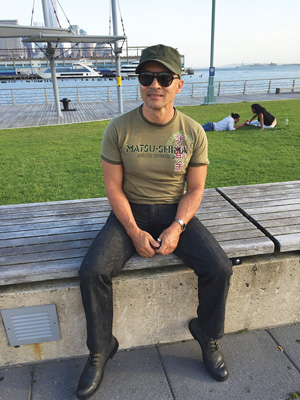
Vil: Why did you come to America?
Vil: Is the Christopher St. Pier an important place for you?
Yeah, because it is one of the few existing places where gay people can be themselves. Not just me, but I think people from all ethnicities. Twenty to 30 years ago, I used to come here because there were a lot of blacks and Latinos. People were doing everything you could imagine. Dance — they were doing vogue and a lot of stuff. The piers were actually run-down. They were all wood, broken. There was a lot of crime, prostitution, drugs. This is really, really wonderful to see the changes, how the pier has become.
Vil: What do you think about some residents pushing for an earlier curfew to get the gay youth off of the pier earlier?
No. Definitely no. This was taken by gay people first. Then it became a hot spot. Now, we have all of these people who own these buildings and they want us out. We need a space, and this is one of them. We have to reclaim it back.
Vil: Have you ever had a problem with the locals here?
No. Never. I’m lucky.
Vil: How would you say the pier changed your life?
Because I think it is the safest place to come. Before it used to be after a certain hour you had to leave because you were afraid. But now…I like to come here any time of day.
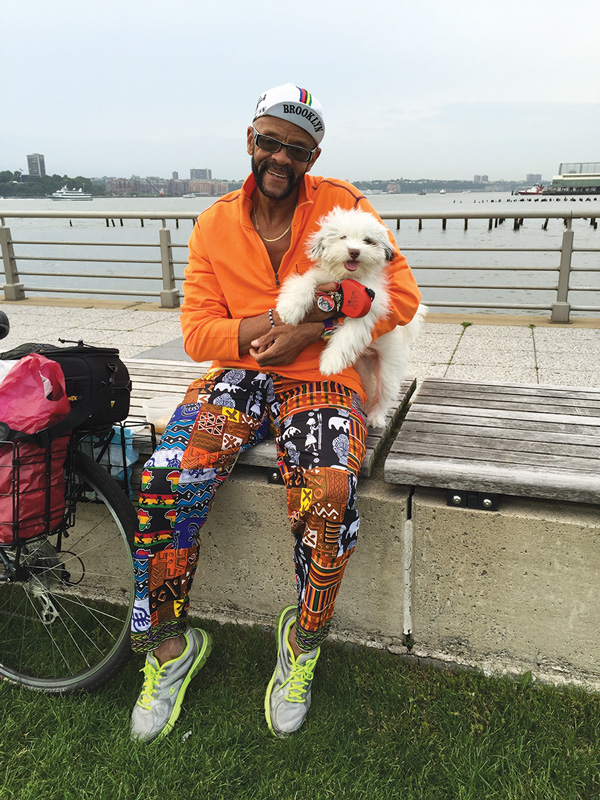
Ashanti, in his 60’s, originally from Philadelphia
Vil: How long have you been coming to the pier?
Since the late ’70s. I’ve been living here for 35 years.
Vil: How has it changed since you’ve been coming here?
The demographics changed. These piers weren’t what they are today. They were raggedy, and horrible.
Vil: What was a typical day at the pier like for you then versus now?
The crowds were much more fun. More openness. Just enjoying their lives. Now, it’s a little bit more gentrified.
Vil: How often do you come to the pier?
I’d say about three times a week maybe.
Vil: What is one of your favorite memories or a good experience that you’ve had here?
The old clubs and bars they used to have. They’re all gone. The memories are still lingering on, but the clubs are gone. I would say this too — gays aren’t given enough recognition for their innovation. One of the innovative things they started here was the Halloween celebration or festival. Now, it’s been taken over commercially and they do it on Sixth Ave. Originally, it was the gays who first started it on Christopher St. I don’t know how many people know that.
Vil: How has coming to the Christopher St. Pier changed your life?
Just meeting all the different types of people here and expanding my mind, and not being so closed-minded to certain things and certain people’s ways of life, especially when it comes to transgenders. I had to become more accepting of them. They have their life to live, too. I may not understand it. I understand it a little more bit better today, but back then it was a learning lesson.
Vil: Did you make friends during the time that you frequently visited here?
Oh yeah. I had a friend who was from England, and he was a famous hairstylist. He lived here right on 11th St. off of Greenwich. He was internationally known. He was one of the most famous hairstylists in the business. He did all the major magazines, the front covers of Vogue. He was in all the major magazines. I met him down here.
— Interviews and photos by Alicia Green













